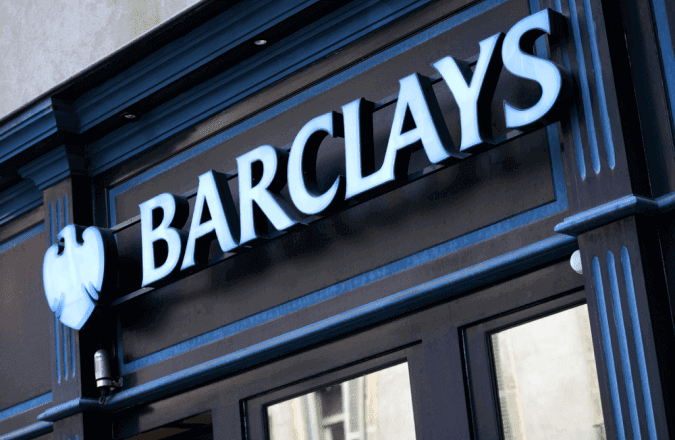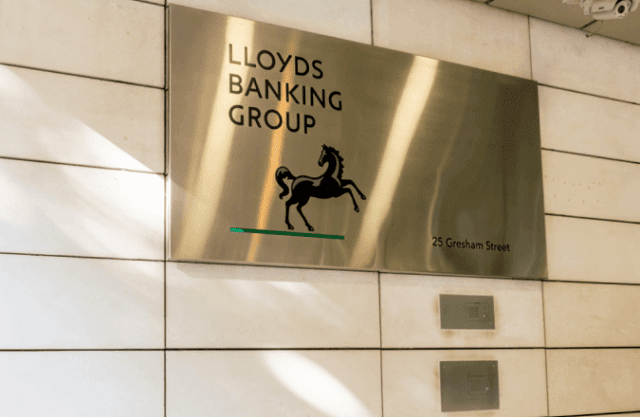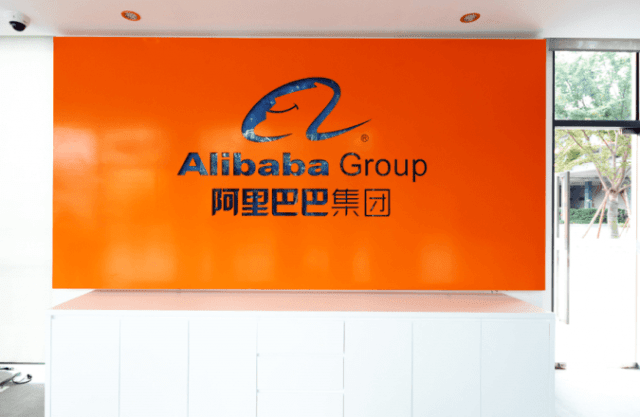How to trade Barclays shares: a complete guide

Learn all about Barclays and the Barclays CFD, with information on the company’s history and share price journey, its share trading hours, and how to trade Barclays share CFDs with Capital.com.
What is Barclays?
Tracings its origins as far back as 1690, Barclays is a multinational bank and financial services institution headquartered in London. With services spanning retail and commercial banking, credit cards, wealth management, and more, it’s one of the ‘Big Four’ UK banks, and runs additional branches across Europe, US, Africa, Africa, Middle East and Latin America.
Barclays is listed and traded on the London Stock Exchange under the ticker symbol BARC.L and on the New York Stock Exchange under the ticker symbol BCS. Barclays is one of the largest constituents of the UK 100 index. In the 2023 fiscal year, the company’s revenue amounted to around £16bn.
What is Barclays’ share price history?
Barclays’s share price history has seen significant shifts since its IPO in 1986.
In line with other UK banking stocks, a key bullish period for the bank was during the 1990s, as a strong economy, high interest rates and low inflation combined to bolster the fortunes of the industry.
Also, financial deregulation, which was still in effect in the 1990s, allowed banks more freedom to diversify their product offerings. For Barclays, the expansion into investment banking broadened its operations and capabilities, with new horizons in mergers and acquisitions advisory services, debt and equity underwriting, and risk management appealing to investors and traders.
Barclays’ share price continued its growth trajectory into the new century, moving above £725 in 2007. However, in line with other financial operators, the crash of 2008 caused by the US subprime mortgage collapse punished the share price heavily. In the years since this catastrophic fundamental event, the stock has been trading in a range of £175-250.
*Barclays stock price data from Macrotrends. Correct as of 27 March 2024. Historical price data is inclusive of the effect of stock splits.
Past performance is not a reliable indicator of future results.
What factors might affect the Barclays live share price?
Barclays’ share price can be impacted by a range of key fundamental events that can impact its many divisions in diverse ways. Here are a few of the main factors that traders should watch out for.
-
Earnings reports and general financial performance: quarterly earnings reports are an important way for market participants to understand how Barclays is tracking in terms of sales, profits, and earnings per share. If results are different to expectations from market analysts, the share price may move accordingly. Other financial indicators of performance to look out for in the banking sector include loan provisions, loan portfolio composition and return on equity.
-
Macroeconomic conditions: economic indicators such as interest rates, inflation rates, GDP growth, and unemployment rates can significantly affect Barclays’ performance. For example, changes in interest rates by the Bank of England can impact the bank's net interest margin and profitability. Meanwhile, global economic downturns, such as the 2008 financial crisis, can have an outsized effect on the banking sector and associated share prices.
-
Strategic initiatives: measures such as cost cutting, expansion plans, new services, and digital transformation can all impact the bank’s strategy, profitability and investor confidence. For example, new CEO Jes Staley set out to refocus the bank’s operations and streamline its businesses in 2016. His plan to scale back investment banking and sell off African operations saw upward momentum in the share price as investors and traders saw the move as key to improving profitability.
-
Legal and regulatory issues: like in other sectors, banks may be involved in legal disputes, and fines related to compliance issues, misconduct, or customer complaints can negatively impact Barclays’ reputation and financial performance, leading to stock price declines. On the compliance side, traders should be mindful of regulatory conditions such as changes in capital requirements, stress test results, and compliance regulations, all of which can impact strategy and prospects.
What are Barclays’ stock trading hours?
Barclays’ stock trading hours are Monday to Friday from 8:00am to 4:30pm (UK time).
If you choose to trade CFDs, you can follow the Barclays stock performance live in GBP with the comprehensive Barclays share price chart.
Monitoring the company’s activity can help you to keep an eye out for any key fundamental or technical events that may affect short-term movements in the Barclays share value.
How to trade Barclays shares with CFDs
If you want to take a position on Barclays shares, you have two options. First, you can buy physical shares in the company through the exchange on which it’s listed. In this case, investing in Barclays stocks means you will own a share, or shares, in the company. This can be considered a long-term investment, as you’re hoping for the price to rise over time.
Alternatively, you can trade a derivative product such as a contract for difference (CFD) on the underlying Barclays stock market price, and speculate on its price movements without actually owning the asset. A CFD is a financial contract, typically between a broker and a trader, where one party agrees to pay the other the difference in the value of a security, between the opening and closing of the trade.
Unlike physical share ownership, you can either hold a long position (speculating that the price will rise) or a short position (speculating that the price will fall). This is considered a short-term investment or trade, as CFDs tend to be used within shorter timeframes.
Another key difference between buying physical Barclays shares and trading through a derivative is the leverage that can be employed with the latter. CFDs are typically traded on margin, which means that a trader has exposure to larger positions with a relatively small outlay. This means both your profits and losses are amplified, making leveraged trading risky. You can learn how to trade shares in our comprehensive guide to shares trading.
To trade Barclays stock CFDs with us, just sign up for a Capital.com account, and once you’re verified, you can use our advanced web platform or download our intuitive yet easy-to-use app. It’ll take just a few minutes to get started and access the world’s most-traded markets.
Why trade Barclays CFDs with Capital.com
Trading CFDs with Capital.com means you’ll enjoy an intuitive, supremely easy-to-use platform, 24/7 support, fair and transparent pricing, along with award-winning education to help build your experience in the markets.* You can seamlessly integrate our smart platform with elite third-party software TradingView and MT4, and refine your strategies with our risk-free demo.
*Awarded best-in-class for education at ForexBrokers.com’s 2024 Annual Awards
FAQs
Who owns Barclays?
The ownership of Barclays comprises a range of institutional and private investors, with private investment firm Dimensional Fund Advisors, asset management firm Eagle Capital Management and investment bank Deutsche Bank among the most significant shareholders as of March 2024.
How much are Barclays shares?
As of 28 March 2024, Barclays’s stock was priced around £181 a share, but as with any asset the market price is dynamic and liable to change at any time. If you’re trading this stock, it’s important to check the Barclays chart frequently to keep on top of price movements, as well as retain a strong understanding of the fundamental and technical influences that can cause the price to shift.
How to trade Barclays shares
If you want to invest in Barclays, you can buy and own the physical share, for example through a stockbroker, at a price you think you can profit on in time. Alternatively, trading a derivative, for example through a CFD, can give you leveraged exposure to the underlying price without ownership. However, leveraged trading means that both profits and losses are amplified, making it risky.
Is Barclays a good stock to buy right now?
Whether Barclays is a good stock to buy is dependent on market conditions and the individual judgement of traders. On a technical level, you might consider technical indicators such as the RSI or MACD to identify potential support and resistance. The standing of competitors, earnings release timings, and the regulatory landscape are all key factors that could influence your buy or sell decisions.
Visit our other complete guides

How to trade Lloyds
